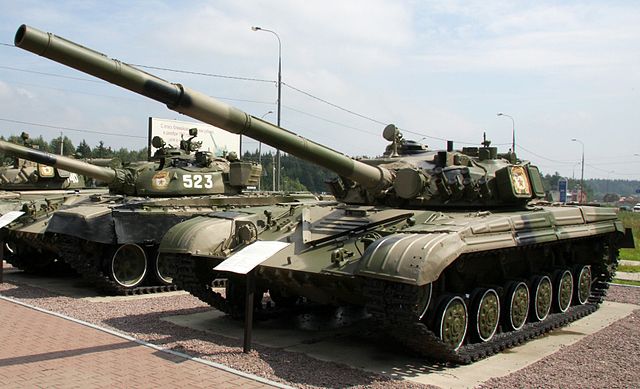 Mysteries
Mysteries  Mysteries
Mysteries  Creepy
Creepy 10 Scary Tales from the Middle Ages That’ll Keep You up at Night
 Humans
Humans 10 One-of-a-kind People the World Said Goodbye to in July 2024
 Movies and TV
Movies and TV 10 Holiday Movies Released at Odd Times of the Year
 Politics
Politics 10 Countries Where Religion and Politics Are Inseparable
 Weird Stuff
Weird Stuff 10 Freaky Times When Famous Body Parts Were Stolen
 Miscellaneous
Miscellaneous 10 Interesting Things Manufacturers Stopped Making and Why
 Gaming
Gaming 10 Funny Tutorials in Games
 History
History 10 Fascinating Little-Known Events in Mexican History
 Facts
Facts 10 Things You May Not Know about the Statue of Liberty
 Mysteries
Mysteries 10 Devastating Missing Child Cases That Remain Unsolved
 Creepy
Creepy 10 Scary Tales from the Middle Ages That’ll Keep You up at Night
 Humans
Humans 10 One-of-a-kind People the World Said Goodbye to in July 2024
Who's Behind Listverse?

Jamie Frater
Head Editor
Jamie founded Listverse due to an insatiable desire to share fascinating, obscure, and bizarre facts. He has been a guest speaker on numerous national radio and television stations and is a five time published author.
More About Us Movies and TV
Movies and TV 10 Holiday Movies Released at Odd Times of the Year
 Politics
Politics 10 Countries Where Religion and Politics Are Inseparable
 Weird Stuff
Weird Stuff 10 Freaky Times When Famous Body Parts Were Stolen
 Miscellaneous
Miscellaneous 10 Interesting Things Manufacturers Stopped Making and Why
 Gaming
Gaming 10 Funny Tutorials in Games
 History
History 10 Fascinating Little-Known Events in Mexican History
 Facts
Facts 10 Things You May Not Know about the Statue of Liberty
10 Weapons That Backfired Horribly
A good weapon should be dangerous to the enemy while perfectly safe to the person wielding it. But there have been plenty of weapons with designs so flawed or execution so poor that they actually achieved the reverse. Some of them were good ideas that were too far ahead of the curve, others were merely terrible engineering failures. And some border on sheer stupidity.
10The Nambu Type 94 Handgun
Imperial Japan had some amazing weapons, ranging from the rugged Arisaka rifle to the nimble A6M2 Zero fighter aircraft. This was not one of them. In fact, the Nambu Type 94 is a serious contender for the title of worst service handgun ever.
Introduced in 1934, the Type 94 was plagued by a series of design flaws which would have been embarrassing even for a Saturday Night Special. To start with, it used an oddly underpowered cartridge—and it could only hold six of those anyway. It also boasted a disturbing lack of accuracy. The slide was difficult to operate in moist conditions (such as the jungles of southeast Asia) and close to impossible to handle when wearing gloves (which were needed in the cold winters of Manchuria). The grip was not very comfortable and the design was top-heavy, which meant greater recoil than would normally be expected for such a weak cartridge.
But by far the Type 94’s worst flaw was an exposed trigger bar along the left side of the frame. If accidentally pressed when a round was chambered, this would cause the gun to discharge, as seen in the video above. Somehow, the gun actually got worse during the war, when workmanship declined and quality materials became scarce.
9The T-64 Tank

For decades, NATO commanders lived in fear of a flood of Warsaw Pact tank and mechanized infantry divisions breaking through Germany’s Fulda Gap. The spearhead of the offensive would be the T-64, a main battle tank that was certainly formidable on paper. A small target at just 2.17 meters (7 ft) tall, the T-64 was relatively light (allowing it to traverse muddy fields or flimsy bridges with ease), composite-armored, and armed with a smoothbore 125mm gun that could fire guided missiles. It also had the advantage of an autoloader that reduced the required crew to three (as in the famous Soviet Armored Guards hymn, “Tri Tankista“).
But in reality, the T-64 was a complete dud. The sophisticated suspension and transmission were flimsy and broke down more often than the rugged T-62 unit. The autoloader also frequently broke down and the turret was not designed to allow for manual loading when that happened. But the real danger was if the autoloader actually worked: it was so badly designed that it could trap the gunner’s limbs, maiming or even killing him. All it took was for a sleeve to be snagged by the mechanism and the gunner’s whole arm would be wrenched into the breech, often requiring amputation as a result. Until conflict broke out in Ukraine last year, more people had been wounded or killed operating the tank than being shot at by it. Its combat performance is currently less than stellar, being easily outclassed by modern anti-tank missiles and artillery.
8The Century Series Fighters

In the 1950s and ’60s, the US Tactical Air Command focused on developing fast planes with a high rate of climb to serve as interceptors or high-speed fighter-bombers—with maneuverability as a very secondary concern. It was decided that the new planes could be armed with air-to-air missiles, some of them nuclear-tipped, rather than traditional guns. The result was the Century Series: the F-100 Super Sabre, the F-101 Voodoo, the F-102 Delta Dagger, the F-104 Starfighter (pictured above), the F-105 Thunderchief, and the F-106 Delta Dart (which was developed from the F-102).
They were very fast, very expensive, and utterly useless at anything other than their intended mission. This was unfortunate, since the F-104 was widely sold as a multi-role fighter, even though it was awful at flying low and slow in ground attack missions (Lockheed ensured the sales with generous bribes to foreign dignitaries such as Prince Bernhard of the Netherlands). The F-104 subsequently earned such flattering nicknames as “Lawn Dart,” “the Flying Coffin,” “Widowmaker,” or “Missile With A Man In It.” The fact that the early-model F-104 ejection seat launched downward only exacerbated the problem, with the Luftwaffe alone losing 116 pilots in F-104 crashes.
Of all Lockheed’s European customers, only Spain lost no pilots in the F-104, since the Ejercito del Aire only used it in its intended role as a high-altitude interceptor in “zoom-and-boom” tactics. The combat performance of Pakistani F-104s was also lackluster, having no clear advantage over the cheaper MiG-21. The USAF ended up relying heavily on the safer F-4 Phantom—originally a Navy plane.
7The Mark 14 Torpedo

Not that the Navy is immune to bad weapons design. At the beginning of World War II, many navies had problems with their torpedo systems (only the Japanese had a really outstanding design, the Long Lance) but the Americans took the prize for messing up. In 1942 alone, Navy submarines fired more than 1,400 torpedoes to sink a paltry 109 Japanese ships, totaling under 42,000 tons.
Developed on a shoestring budget during the Depression, the Mark 14 Torpedo and its Mark VI Magnetic Exploder were “reliably unreliable.” An inadequate testing phase failed to realize that the depth gauge didn’t work properly, meaning many torpedoes sailed too far under the target’s keel. A magnetic trigger was supposed to detect when a ship was right overhead and detonate the torpedo, breaking the back of the enemy. The key word is “supposed,” since it rarely worked. Neither did the secondary impact trigger. Many a boat crew despaired when their perfectly targeted torpedo just crashed without detonating.
But they were the lucky ones—the torpedoes also had a tendency to run in circles and end up heading back at the sub that launched them. This actually sank the USS Tullibee and very nearly took down the USS Sargo as well. It took a vigorous campaign headed by Rear Admiral Charles Lockwood to address the Bureau of Ordnance’s cranio-rectal inversion and get the Mark 14 redesigned to fix the problems. It then became reliable enough to last into the 1970s.
6The Glisenti M1910 Handgun
Italy has a reputation for crafting quality handguns, with variants of the Beretta 92 currently the standard sidearm for a number of NATO militaries (including the US M9). But there’s always an exception that proves the rule, and the Glisenti M1910 has to be a serious rival for the Nambu 94’s title of worst service handgun ever.
One of the first semi-auto handguns accepted for frontline service, the M1910 was introduced in 1910 and saw use during World War I and the Italian colonial wars in Libya and Somalia. While its 9mm rounds were similar to the excellent German 9mm Parabellum cartridges, they had to be made much less powerful. This was because the Glisenti engineers had made the gun very easy to disassemble, but subsequently very flimsy. Heavy use would cause the frame and receiver assembly to loosen until the gun came apart in the hands of the shooter. And if the shooter made the mistake of attempting to use the more powerful Para rounds, the gun would effectively “explode.” There were attempts to improve the design, but the military ultimately gave up and replaced it with the Beretta M1934.
5The Breda M1930 Machine Gun
The end of the Glisenti wasn’t the end of the Italian tendency to make elegant but flimsy items with low durability. The Breda M1930 lacked the simple primary extraction design of many other machine guns, so an internal oiler had to be installed in the feeding mechanism to ensure spent cartridges would actually be ejected. This did succeed in getting the cartridges out, but the oil tended to form a disgusting gunk in even slightly dusty environments. Such gunk would clog the mechanism of all but the most hardy of firearms, and the expensively precision-machined Breda was certainly not one of those. Armed with the M1930, Italy’s campaigns in Ethiopia and the deserts of North Africa had predictable results. No mass-produced design has used oiled cartridges since.
Breda’s designers also had the bright idea to make the magazine an integral part of the gun, meaning that reloading took much longer than simply changing magazines. The gun also had an alarming recoil for its caliber and was susceptible to overheating (another great feature for Italy’s desert campaigns).
4The Heinkel He-177 Greif

This one should have been named the “Grief.” In Nazi Germany, technical prowess and common sense were often overruled by the childish whims of the top brass, and the He-177 was one of the foremost examples. The idea was good: a bomber with the range and payload of the Allied Lancasters and Flying Fortresses, but able to fly faster and higher.
But the Germans lacked an engine powerful enough for such a long-range bomber. Instead, they coupled two Daimler DB-601s, the wonderful engine used in the Messerschmitt Bf-109. This also allowed the number of propellers to be reduced from four to two, cutting down on drag. As a less-positive side effect, the engines ran so hot they often burst into flames. Even during normal operation, the heat was so intense that the wing spars weakened.
That was bad enough during high-altitude bombing, which doesn’t stress the wing assembly too much. But it was absolutely catastrophic if you attempted to turn the 32-ton behemoth into a dive bomber. Which the Nazis did, thus dooming countless test pilots to an untimely end. Ultimately, the Germans built several thousand He-177s, but their impact on the course of war was negligible other than to waste resources and pilots. The British had actually tried something similar with the Avro Manchester, but they had the good sense to give up on the coupled engines and modify the design into the very successful four-engined Avro Lancaster.
3The LaGG-1 And LaGG-3 Fighters

The Nazis were not unique in producing terrible aircraft thanks to political meddling. Their deadly foe, the Soviet Union, arguably outdid them with the LaGG-1 and LaGG-3. Named after the initials of designers Semyon Lavochkin, Vladimir Gorbunov, and Mikhail Gudkov, the LaGG was built around a polished and very flammable wooden fuselage. Soviet pilots quickly began to joke that the name actually meant “Lakirovannii Garantirovannii Grob” or “Varnished Guaranteed Coffin.”
Shortages meant that the planes had to be built using surplus Klimov M-105 engines, which were so underpowered that even the lightweight wooden airframes were too much for them, and the planes were slow in the air—when they ran at all, that is. Despite problems revealed in testing, the planes were rushed into production.
Appalled, Lavochkin ditched Gudkov, and eventually Gorbunov as well, and essentially redesigned the aircraft himself. The result was the excellent La-5/La-7 series, equipped with a radial Shvetsov M-82 engine. Most Soviet aces of World War II flew these, which were more than a match for German Messerschmitts and Focke-Wulfs.
2The V-2 Missile
The V-2 was the first ballistic missile in the world, an amazing engineering feat for 1944. Designed and built by Nazi Germany under the direction of Wernher von Braun (later to become a key figure in NASA) it was a single-stage missile with a range of 320 kilometers (200mi) propelled by a mixture of ethanol and oxygen. Originally named the Aggregat-4, it was renamed by Nazi propagandists as Vergeltungswaffe-2, or Second Vengeance Weapon, the V-1 being the infamous “doodlebug” flying bomb.
The Nazis deployed the V-2 against Allied cities (chiefly London) in the later stages of World War II. Although around 2,700 civilians were killed (about two dead per launched rocket), they were wildly inaccurate to the point where it was actually more dangerous to work building them—the Nazis used slave labor so underfed that their life expectancy was just a few weeks. That was if the rockets didn’t explode while being built or if Allied bombs didn’t destroy the factories. In the latter days of the war, this became less of a concern because of the transfer of facilities to an underground complex, the Dora-Mittelbau. Still, an estimated 20,000 V-2 workers were killed while building the rocket, so it was actually almost 10 times more lethal than against the enemy. Not to mention that its development cost more than the Manhattan Project.
1The SA-80 Rifle
When it comes to apparently brilliant ideas that don’t work well in real life, we couldn’t forget the British. The SA-80 is their current standard rifle, officially designated L-85, and although it has evolved to be effective in combat, it didn’t start well. Fully introduced in 1987, the SA-80 boasts a “bull-pup” configuration, which means that the receiver and magazine assembly are behind the trigger and handle, allowing a shorter overall length with the same weight and barrel size. The British originally explored the idea with the EM-2 rifle in the 1950s, but these prototypes were ultimately discarded in favor of the much less radical, but awesomely reliable FN FAL.
The concept resurfaced when the Thatcher government increased defense spending in the ’80s. The bull-pup design means the weapon is not ambidextrous, only operating effectively from the right shoulder. As soon as it was adopted, there were complaints that it jammed far too easily. In fact, the reliability used to be so poor that more than 100 pieces had to be changed following its disastrous performance during the First Gulf War (most assault rifle designs have about 50 different pieces). Despite this, it still jams relatively easily in dusty conditions.
The SA-80 is a weapon designed for a war that never happened (the aforementioned Fulda Gap breach) and which is consequently unsuited for the real wars it fights, namely peacekeeping in deserts. Let’s not even get into the decision to tell the workers assembling the rifles that they would be laid off after finishing them, which ensured an ensuing decrease in assembly quality (up to 90 percent of the rifles produced after this point had their receivers squeezed in a vice to make them fit).
A. J. Simonson is a lowly engineering student who strives to be an Oompa Loompa of technology. History, languages, politics, and economics are side interests to his main passion: cars and planes.








